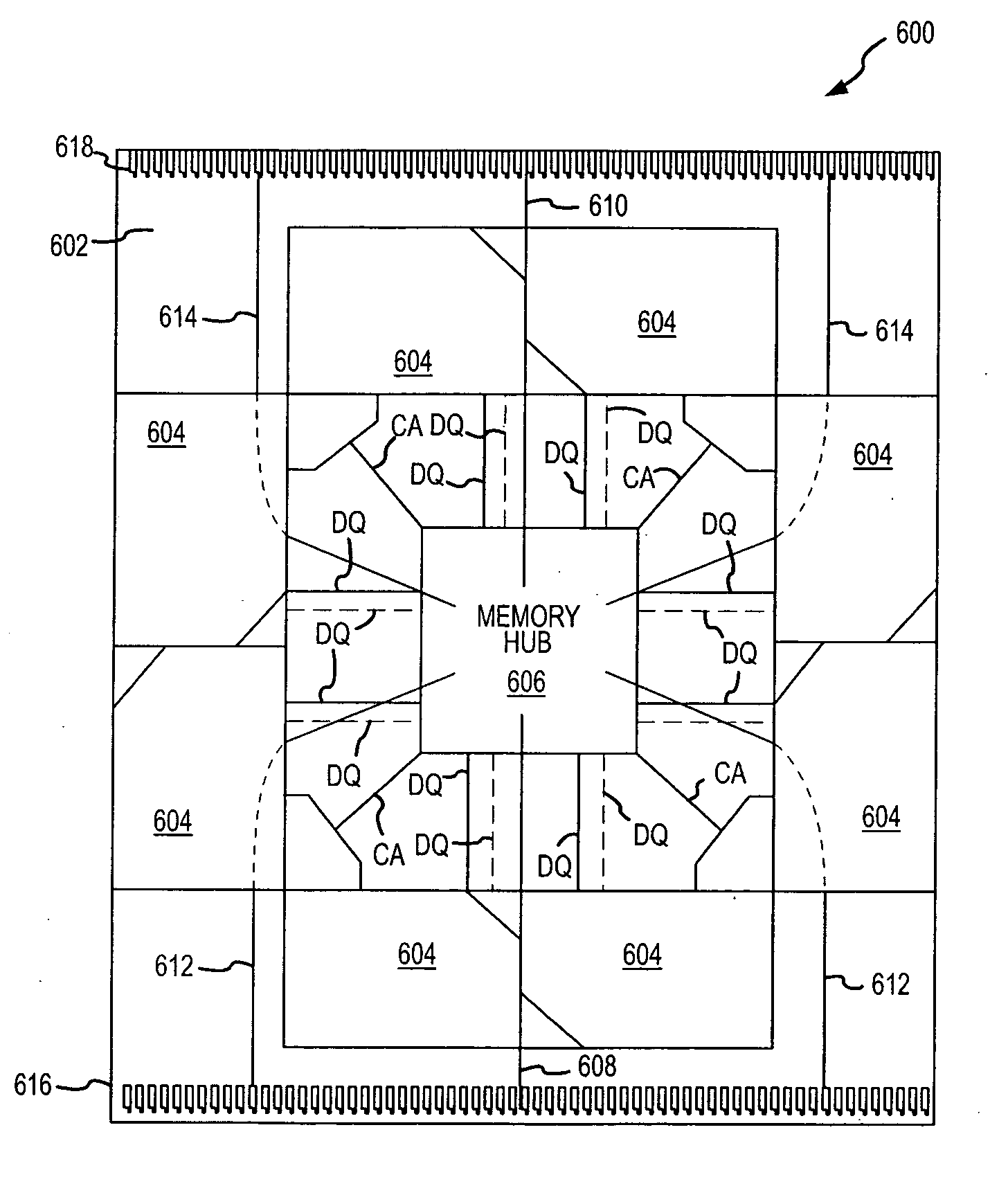System and method for optimizing interconnections of components in a multichip memory module
a multi-chip memory module and interconnection optimization technology, applied in computing, instruments, data conversion, etc., can solve the problems of consuming more space, skewing can seriously limit the operating speed of memory devices, and efforts are often frustrated
- Summary
- Abstract
- Description
- Claims
- Application Information
AI Technical Summary
Benefits of technology
Problems solved by technology
Method used
Image
Examples
Embodiment Construction
[0022]FIG. 2 is a schematic top view of a memory module 200 including a circuit board 202 on which eight memory devices 204 are physically positioned around a memory hub 206 and are physically oriented to minimize the skew of signals among the memory devices according to one embodiment of the present invention. The position and orientation of each memory device 204 is such that the electrical characteristics of conductive lines or busses interconnecting the memory device and the memory hub 206 are substantially the same for all memory devices, minimizing the skew of signals among the memory devices and thereby allowing for high-speed operation of the memory module as will be described in more detail below. In the following description, certain details are set forth to provide a sufficient understanding of the present invention. One skilled in the art will understand, however, that the present invention may be practiced without these particular details.
[0023] The construction of the...
PUM
 Login to View More
Login to View More Abstract
Description
Claims
Application Information
 Login to View More
Login to View More - R&D
- Intellectual Property
- Life Sciences
- Materials
- Tech Scout
- Unparalleled Data Quality
- Higher Quality Content
- 60% Fewer Hallucinations
Browse by: Latest US Patents, China's latest patents, Technical Efficacy Thesaurus, Application Domain, Technology Topic, Popular Technical Reports.
© 2025 PatSnap. All rights reserved.Legal|Privacy policy|Modern Slavery Act Transparency Statement|Sitemap|About US| Contact US: help@patsnap.com



